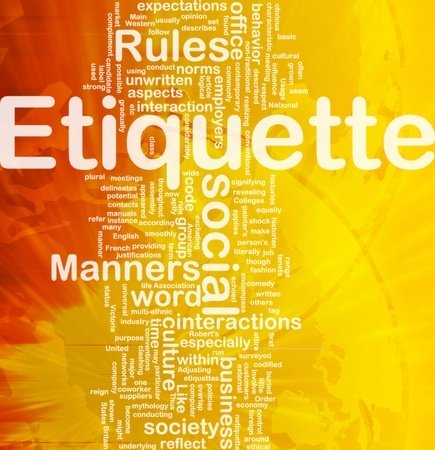The Mute Button Matters: Audio/Video Etiquette in
a Hybrid Workplace
 Image Source: andreypopov; "Online Video Conference Business Meeting.", 2025. Accessed via https://www.123RF.com/photo_192759707, Standard License.
Image Source: andreypopov; "Online Video Conference Business Meeting.", 2025. Accessed via https://www.123RF.com/photo_192759707, Standard License.Mastering virtual meeting etiquette is essential for career success and your use of the mute button can be an essential skill. As companies continue to embrace hybrid workplace models and develop their own versions of remote workspaces, how you present yourself and manage your audio can impact your professional reputation regardless of your generation or technical background.
Your Digital First Impression
The initial moments of joining a virtual call create an immediate impression that can influence how colleagues and supervisors perceive your professionalism. Unlike casual video chats with friends and family, work-related video calls establish lasting perceptions that can affect your workplace standing. Your virtual presence has become an extension of your professional brand. For professionals with limited in-person office interaction, how you appear and engage digitally now constitutes a substantial portion of your workplace identity.
Understanding the nuances of virtual call etiquette isn’t merely about avoiding embarrassing situations—it’s about strategic career positioning in an environment where your digital presence often represents your entire professional self.
Managing the Mute Button
The mute button, though seemingly insignificant, represents one of the most powerful tools in your virtual meeting toolkit. Background noise interruptions rank as a primary complaint about virtual meetings, with many professionals reporting that unnecessary noise significantly decreases productivity and focus.
Your guide to microphone management:
- Default to mute when not speaking in meetings with more than three participants.
- Master keyboard shortcuts for quick unmuting (typically Alt+A or Spacebar on most platforms).
- Conduct audio tests before important meetings—spending the first minutes troubleshooting on camera creates an impression of unpreparedness.
- Consider noise-canceling technology if you work in shared or acoustically challenging environments.
- Briefly identify yourself when unmuting after extended silence (“This is Jordan, I’d like to add…”).
In larger meetings especially, those who manage their audio professionally are often perceived as more prepared and considerate—small details that leadership invariably notices and appreciates.
A Strategic Approach to Video
“Camera on or off?” has become a legitimate professional consideration. While many organizations now provide explicit video guidelines, many still leave the decision to individual judgment. Here’s a strategic framework for navigating this choice.
When your camera should typically be ON:
- One-on-one meetings with supervisors or mentees
- When presenting or leading discussion points
- Team meetings focused on collaboration or relationship building
- Client-facing interactions
- Organization-wide gatherings when leadership has cameras enabled
When camera OFF might be appropriate:
- Large informational sessions where you’re primarily consuming information
- Quick check-ins where audio communication suffices
- During temporary environmental disruptions
- During portions of meetings when you’re not actively contributing
Different professionals have varying comfort levels with camera visibility. The key is being strategic about when visual presence adds value versus when audio participation is sufficient for effective collaboration.
The Background Check: What Your Space Communicates
Your background isn’t merely decorative—it’s communicative. Meeting participants spend a portion of their time observing others’ backgrounds rather than focusing on facial expressions.
Consider these background options:
- Real background (carefully arranged): Communicates authenticity but requires consistent maintenance.
- Virtual background: Provides privacy and consistency but can appear unprofessional if technology limitations arise.
- Subtle blur: Offers a balanced solution that masks details while maintaining professional appearance.
Whatever choice you make, apply the “executive test”: if your organization’s senior leadership unexpectedly joined your call, would you feel confident about what’s visible behind you?
Preparation Prevents Problems
Appearing unprepared can be a contributing factor in undermining professional credibility, and this includes preventable technical difficulties. Technical preparedness signals broader organizational readiness and respect for colleagues’ time.
Develop a pre-meeting technical checklist to review five minutes before important calls:
- Verify microphone and camera functionality
- Close applications that might generate disruptive notifications
- Position lighting sources in front of you rather than behind
- Ensure device power supply (battery charge or outlet connection)
- Establish a contingency plan (phone dial-in information) if primary connection fails
Virtual settings require intentional presence and active engagement. While mastering audio-visual etiquette might seem secondary to core job responsibilities, these elements create the professional framework through which your contributions are evaluated.
By managing these aspects of virtual presence, you’re not merely adapting to workplace evolution—you’re positioning yourself as a considerate, prepared professional who values effective communication across all platforms. Remember, that mute button isn’t just controlling your audio—it’s influencing your impact. Use it wisely.














